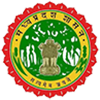6.10.4 Laying and Jointing Procedures
6.10.4.1 TRENCH PREPARATION
The trench bed must be free from any rock projections. The trench bottom where it is rocky and uneven a layer of sand or alluvial earth equal to 1/3 dia of pipe or 100mm whichever is less should be provided under the pipes.
The trench bottom should be carefully examined for the presence of hard objects such as flints, rock, projections or tree roots. In uniform, relatively soft fine grained soils found to be free of such objects and where the trench bottom can readily be brought to an even finish providing a uniform support for the pipes over their lengths, the pipes may normally directly on the trench bottom. In other cases the trench should be cut correspondingly depper and the pipes laid on a preapered under beding, which may be drawn from the excavated material if suitable.
6.10.4.2 LAYING AND JOINTING :
As a rule trenching should not be carried out too far ahead of pipe laying. The trench should be as narrow as practicable. This may be kept from 0.30m over the outside diameter of pipe and depth may be kept at 0.60 - 1.0m depending upon traffic conditions. Pipe lengths are placed end to end along the trench. The glued spigot and socket jointing technique as mentioned later is adopted. The jointed lengths are then lowered in the trench and when sufficient length has been laid the trench is filled.
If trucks, lorries, or other heavy traffic will pass across the pipe line, concrete tiles 600 x 600mm of suitable thickness and reinforcement should be laid about 2m above the pipe to distribute the load. If the pipe line crosses a river the pipe should be buried at least 2m below bed level to protect the pipe.
For bending, the cleaned pipe is fulled with sand and compacted by tapping with wooden stick and pipe ends plugged. The pipe section is heaeted with flame and the portion bent as required. The bend is then cooled with water, the plug removed, the sand poured out and the pipe (bend) cooled again. Heathing in hot air over hot oil bath, hot gas or other heating devices are also practiced.Joints may be jeat welded, or flamed or with rubber gaskets or made with solvent cement. Threaded joints are also fesible but are not recommended.
Socket and spigot joint is usually is prefferred for all PVC pipes upto 150mm in dia. The socket length should at least be one and half times the outer dia for sizes upto 100mm dia and equal to the outer dia for larger sizes.
For pipe installation, solvent gluing is preferable to welding. The glued spigot socket connection has greater strength than can ever be achieved by welding. The surfaces to be glued are throughly scoured with dry cloth and preferably chamfered to 30 . If the pipes have become heavily contaminated by grease or oil, methylene cement is applied with a brush evenly to the outside of the socket on the other. The spigot is then inserted immediately in the socket upto the shoulder and thereafter a quarter (90 ) turn is given to evenly distribute the cement over the treated surface. The excess cement which is pushed out of the socket must be removed at once with a clean cloth. Jointing must be carried out in minimum possible time, time of making complete joint not being more than one minute. Joints should not be disturbed for at least 5 minutes. Half strength is attained in 30 minutes and full in 24 hours. Gluing should be avoided in rainy or foggy weather as the colour of glue will turn cloudy and milky as a result of water contamination.
6.10.4.3 PRE-FABRICATED CONNECTIONS
In laying, long lengths of pipe, prefabicated double socketed connections are frequently used to join successive pipe lengths of either the same or one size different. The socket in this case must be formed over a steel mandrel. A short length of pipe is flared at both ends and used as a socket connection. The mandrel used in sized such that the internal dia of the flared socket matches the outer dia of the spigot to be conneted. By proper sizing of the two ends of a connector, it is possible to achieve reduction (or expansion) of pipe size across the connector.
6.10.4.4 STANDARD THREADED CONNECTIONS
Normally PVC pipes should not be threaded
For the conncections of PVC pipes to metal pipes, a piece of a special thick wall PVC connecting tube threaded at one end is used. The other end is connected to the normal PVC pipe by means of a glued spigot and socket joint. Beofre installation the condition of the threads should be carefully examined for cracks and impurities.
Glue can be used for making joints leak proof. Yarn and other materials generally used with metal pipe and fittings should not be used. Generally, it is advisible to use PVC as the spigot portion of the joint.






